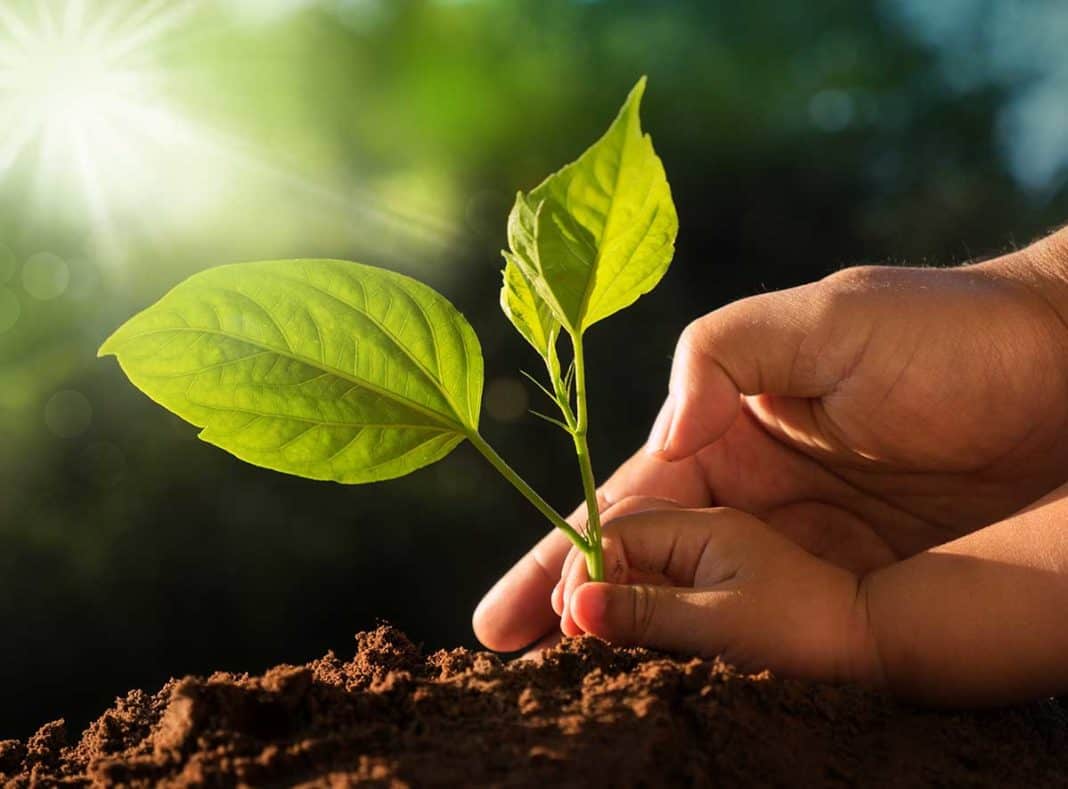EDITOR’S NOTE: Canada’s Changing Climate Report was released in 2019 as the first in a series that assessed how and why Canada’s climate has changed and what future changes are projected. In August, the Regional Perspectives Report: Ontario Chapter was released to provide a regional perspective of how climate change is affecting our communities, environment and economy and how we are adapting. In this series, The Expositor will look at each of the seven key messages contained in the Ontario Chapter. In the August 24 edition, The Expositor spoke to contributing lead authors Al Douglas and David Pearson about the Ontario Chapter and what unique challenges might be faced by Manitoulin Island. This week, The Expositor looks at nature-based solutions.
SUDBURY—Ontario is not exempt from the impacts of climate change. The province’s mean annual temperature increased by 1.3⁰C between 1948 and 2016, and annual precipitation has increased by 9.7 percent over the same period. The frequency and magnitude of extreme weather events are also increasing. A new report, the Ontario chapter of ‘Canada in a Changing Climate: Regional Perspectives,’ was released last month to help inform and support adaptation to climate change in Ontario.
According to the report, temperatures are increasing in the province, with the greatest warming observed in Northern Ontario and the largest increases occurring during winter. Heat waves are projected to become more frequent with further warming, and annual precipitation is projected to increase along with extreme precipitation events, which will increase the risk of flooding. Highly variable lake levels in the Great Lakes means we have been seeing both record lows and extreme highs. All of these changes are affecting Ontario’s communities, environment and economy.
The Ontario chapter also highlights the wide range of climate impacts the province is facing and how it is adapting. It reveals the vulnerability of Ontario’s infrastructure to climate change and shows how nature-based solutions can help address climate change impacts on biodiversity and ecosystem services.
“The magnitude of the changes we have seen and will continue to see are not commensurate with the level of resilience in Ontario,” said Al Douglas, president of Climate Risk Institute (CRI) and a coordinating lead author of the report.
“The only way we can slow climate change is to reduce greenhouse gas emissions,” Mr. Douglas told The Expositor. “We’re a long ways away from that. We’re a long ways away from that but we still need it. In addition to all those, in addition to that slowing of climate change, we need to take steps to manage, to work with it and to work with nature.”
More than 14 percent of the 15,800 plant and animal species in Ontario that have been assessed by scientists are considered vulnerable, rare or rapidly declining, according to a 2016 Canadian Endangered Species Conservation Council report. Their future survival is uncertain.
A separate assessment looked at the relative vulnerability to climate change of 280 species in Ontario’s Great Lakes Basin, with results showing that 175 are vulnerable to climate change. Of these, 11 are considered extremely vulnerable, 49 highly vulnerable and 115 are moderately vulnerable. Molluscs, fish, amphibians and lichens were most vulnerable and birds, insects, spiders and reptiles were found to be least vulnerable.
In a webinar hosted by CRI, report contributing author Dr. Cindy Cho, a research scientist with Fisheries and Oceans Canada, spoke about nature-based solutions. Dr. Cho is an ecologist with a focus on freshwater fish, habitat and fisheries within lakes and rivers.
“One of the reasons nature-based solutions will help is that the Earth is actually a self-sustaining, balanced system,” Dr. Cho said. “There are cyclical processes that influence climate patterns so that could be the distribution of temperature, evaporation and precipitation, wind patterns around the planet, and what’s happening is climate change is disrupting some of these cycles and these processes.”
We are seeing changes in the location, magnitude and frequency of flood and drought events associated with atmospheric rivers in Ontario. This is one example of how climate change disrupts natural patterns, Dr. Cho said.
Temperature and precipitation are important because they drive the quantity and the quality of habitats and the habitat available for organisms in terrestrial, freshwater and marine environments. In some cases, Dr. Cho said, these changes in habitat quality and quantity create conditions that are suitable for non-native or invasive species to establish, and with the establishment of those invasive species there may be competition and pressure put on the native species. “That’s kind of the influence of the overall climatic patterns on ecosystems or organisms, but of course at more local scales we also have human activities such as physical habitat loss, urbanization and pollution that can further alter habitat quantity and quality.”
In the Great Lakes and in lakes and rivers across Ontario, we’re now seeing the consequences of climate change on fish. One example is range shifts. “With the warming trend in Ontario we’re starting to find warm water species like smallmouth bass and bluegill in northern lakes and rivers where they historically haven’t been found, so the conditions are right for them to establish populations. When we see these changes in species distributions there can also be community shifts, so you can end up with changes in the relative abundance of cold water versus warm water species. In some cases we’re seeing changes in the whole food web of aquatic systems, so phytoplankton, zooplankton, the small forage fishes as well as the predatory species. In some systems and regions we’re also seeing changes in the growth patterns. Some species are increasing their growth. Some species are seeing decreases in growth and that has significant consequences when we think from a fisheries perspective because it impacts the biomass that’s available for say, recreational fish or commercial fish harvest. In some fish systems we’re also seeing changes in the phenology so that’s the timing of key life history events. You can think of it as the timing of spawning runs in the spring or spawning runs in the fall or even nesting for some species in lakes.”
Nature-based solutions such as Indigenous Protected and Conserved Areas, protected areas, the restoration or maintenance of flow regimes in rivers, the maintenance and restoration of natural shorelines in lakes, can all help minimize the impacts of climate change on these ecosystems and slow the loss of biodiversity or changes in biodiversity. “Essentially these actions will help buffer those systems from those broader climatic changes that are happening and if implemented at a broad enough scale can actually lead to the reestablishment of that self-sustaining balance that I mentioned before,” said Dr. Cho.
Other actions that can boost ecosystem resiliency are restrictions on surface and groundwater withdrawals from vulnerable lakes, rivers and wetlands; providing nest boxes or rehabilitating nesting habitats; and installation of fencing and dedicated wildlife corridors such as tunnels and overpasses.




